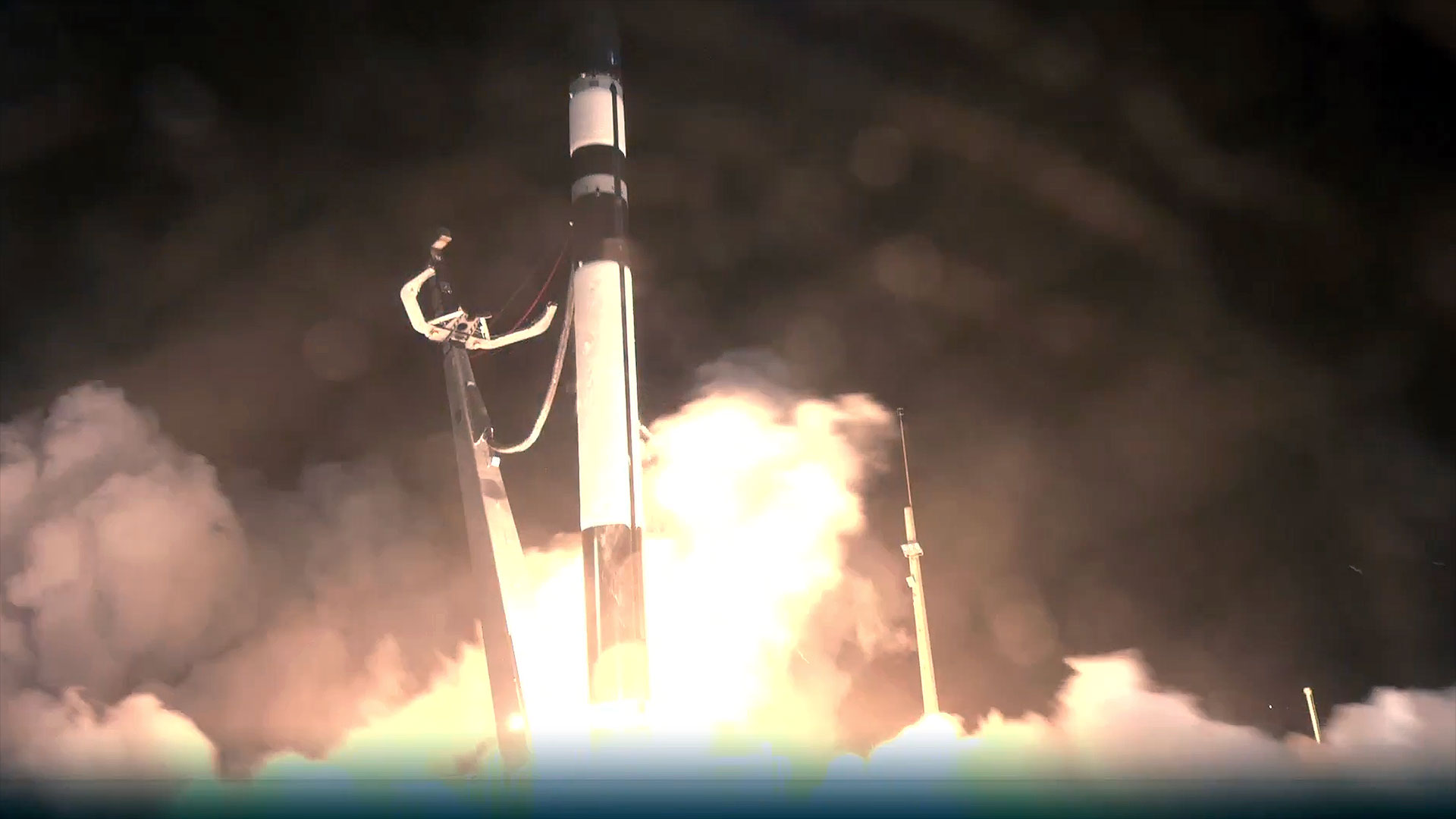Rocket Lab launches 'Symphony of the Stars' mission
Liftoff occurred at 3:08 a.m. EDT on Saturday (June 28).

Rocket Lab launched a mysterious satellite early Saturday morning (June 28).
An Electron rocket topped with a single spacecraft lifted off from Rocket Lab's New Zealand site on Saturday at 3:08 a.m. EDT (0708 GMT; 7:08 p.m. local New Zealand time).
"MISSION SUCCESS and payload deployment confirmed! Music to our ears for the 'Symphony In The Stars' mission and Electron's 68th launch," Rocket Lab officials wrote on social media.
The mission, which Rocket Lab called "Symphony in the Stars," sent the satellite to a circular orbit 650 kilometers (404 miles) above Earth.
"Symphony in the Stars" is the first of two missions for "a confidential commercial customer," Rocket Lab wrote in a mission description. The second of those flights is expected to launch this year as well.
And that's pretty much all of the information the company has revealed about Saturday's mission; for example, we don't know what the satellite will do once it reaches orbit.
"Symphony in the Stars" was the tenth mission of 2025 and 68th liftoff overall for Electron, a 59-foot-tall (18-meter-tall) rocket that gives small satellites dedicated rides to orbit.
Breaking space news, the latest updates on rocket launches, skywatching events and more!
Rocket Lab is also developing a larger, partially reusable rocket called Neutron, which is expected to debut sometime this year.
Editor's note: This article was updated Saturday, June 28 after the mission successfully launched.

Michael Wall is a Senior Space Writer with Space.com and joined the team in 2010. He primarily covers exoplanets, spaceflight and military space, but has been known to dabble in the space art beat. His book about the search for alien life, "Out There," was published on Nov. 13, 2018. Before becoming a science writer, Michael worked as a herpetologist and wildlife biologist. He has a Ph.D. in evolutionary biology from the University of Sydney, Australia, a bachelor's degree from the University of Arizona, and a graduate certificate in science writing from the University of California, Santa Cruz. To find out what his latest project is, you can follow Michael on Twitter.
You must confirm your public display name before commenting
Please logout and then login again, you will then be prompted to enter your display name.

